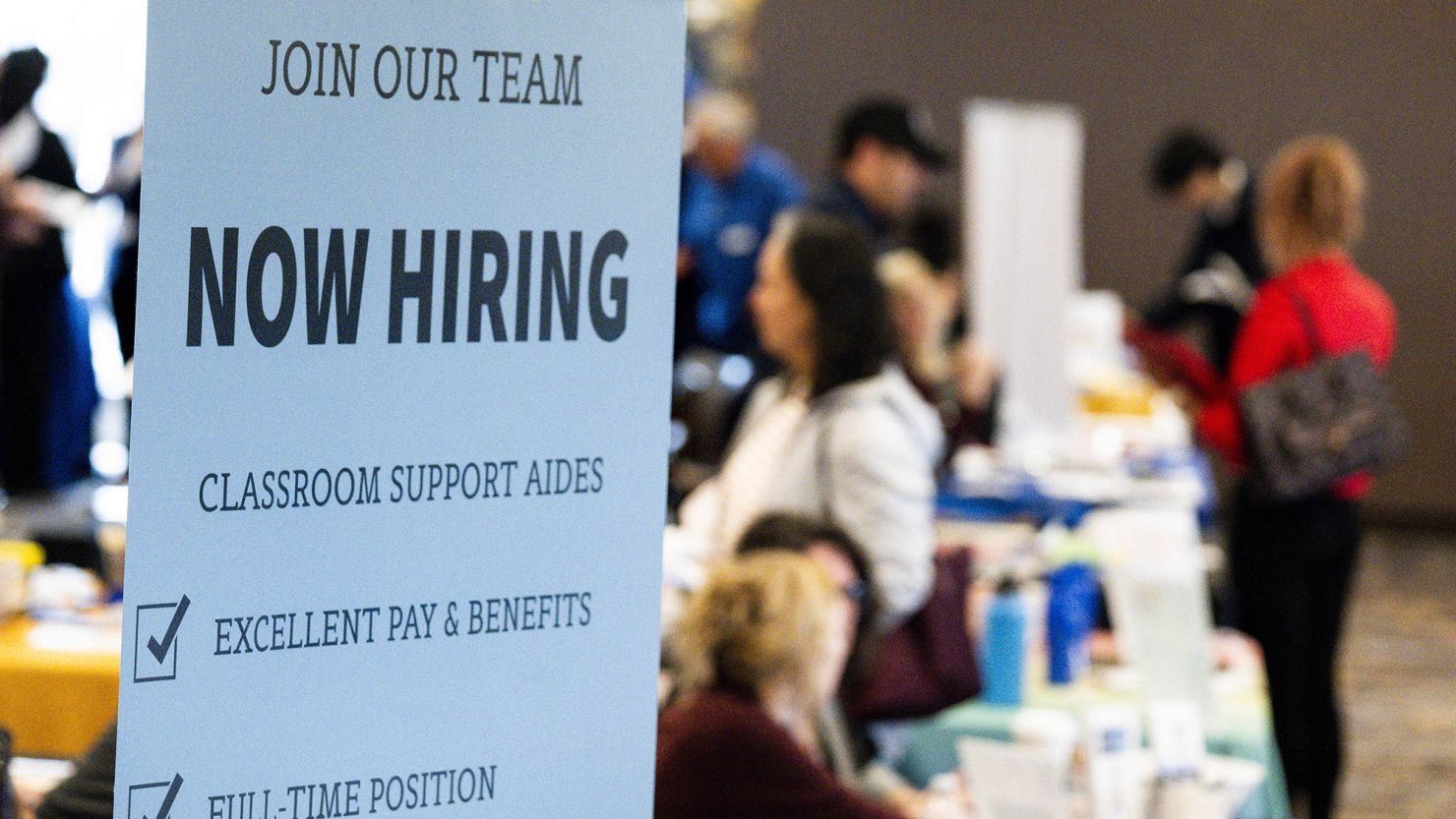Demand for workers in the US picked up slightly in February in a sign that the job market remains on strong footing, though layoffs also ticked up that month.
There were a seasonally adjusted 8.8 million job openings in February, a notch higher than the prior month’s downwardly revised 8.74 million, the Labor Department reported Tuesday. That was roughly in line with economists’ expectations. The number of available jobs remains well above pre-pandemic levels, but is down from a record high of 12.2 million in March 2022.
Openings soared the most in finance and insurance; state and local government excluding education; and arts, entertainment and recreation. Meanwhile, job vacancies dropped sharply in information and federal government.
However, while labor demand remains solid, the report also showed some possible signs of a loosening job market. Layoffs rose to 1.72 million from 1.6 million. For the past three years, layoffs have hovered below pre-pandemic levels, but as of February, they were above the lowest point in 2019.
The number of hires rose slightly in February to 5.8 million from 5.7 million.
The ratio of job openings to the number of unemployed people seeking work, a measure of labor market tightness often cited by Federal Reserve Chair Jerome Powell, fell to 1.36 in February from January’s 1.43. That’s well below the ratio of 2:1 in March 2022, the highest on record, and shows that demand and supply in the job market has become much more balanced over the past two years.
“Although there is plenty of speculation that employment has slowed down, recent numbers, including job openings as well as initial jobless claims, continue to indicate that the US labor market has remained stable,” Eugenio Aleman, chief economist at Raymond James, said in a note Tuesday.
Could the job market’s resilience persist?
It’s an important week of labor data for Wall Street and the Fed.
Tuesday’s job openings report kicked it off; then on Wednesday, payroll software company ADP releases its March employment report. While it doesn’t usually move markets, it is seen by some as a proxy for the government’s monthly jobs report. Weekly initial jobless claims figures, which remain at historically low levels, are due Thursday.
The week is capped off by the Labor Department’s comprehensive jobs report for March, to be released Friday. Employers have continued to add jobs at a solid clip in recent months as unemployment remained low. In February, payrolls grew by 275,000 jobs as the unemployment rate edged higher to 3.9% from 3.7%.
Economists are expecting to see that employers added 202,500 jobs in March, and for the unemployment rate to have held steady at 3.9% last month, which would mark the 26th consecutive month of unemployment below 4%, according to FactSet estimates as of Tuesday morning.
The Fed is keeping a close eye on the labor market
The Fed is still in the throes of its historic inflation battle and officials are carefully determining the right time to cut interest rates, which have been at a 23-year high since July.
The job market’s health is a key factor officials are considering. The Fed is likely to continue to hold rates steady if employment and inflation remain stable. However, if the job market begins to weaken sharply, that would speed up that first rate cut, since the central bank is also responsible for achieving maximum employment, in addition to stabilizing prices.
“We don’t need to be in a hurry to cut,” Powell said Friday during an event hosted by the San Francisco Fed, pointing to strong employment data as a reason the Fed can keep rates at their current levels.
But, ultimately, the Fed’s rate decisions mainly depend on what inflation gauges show. Consumer prices rose by 2.5% in February from a year earlier, up slightly from January’s 2.4% rise, according to the Fed’s favorite inflation measure, as services prices remained stubbornly high. That reflected the understanding that inflation’s journey back down to earth will continue to be a bumpy ride.







